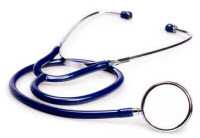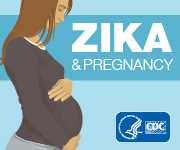Diagnosis

Birth defects can be diagnosed during pregnancy or after the baby is born, depending on the specific type of birth defect.
During Pregnancy: Prenatal Testing
Screening Tests
A screening test is a procedure or test that is done to see if a woman or her baby might have certain problems. A screening test does not provide a specific diagnosis—that requires a diagnostic test (see below). A screening test can sometimes give an abnormal result even when there is nothing wrong with the mother or her baby. Less often, a screening test result can be normal and miss a problem that does exist. During pregnancy, women are usually offered these screening tests to check for birth defects or other problems for the woman or her baby. Talk to your doctor about any concerns you have about prenatal testing.
First Trimester Screening
First trimester screening is a combination of tests completed between weeks 11 and 13 of pregnancy. It is used to look for certain birth defects related to the baby’s heart or chromosomal disorders, such as Down syndrome. This screen includes a maternal blood test and an ultrasound.
- Maternal Blood Screen
The maternal blood screen is a simple blood test. It measures the levels of two proteins, human chorionic gonadotropin (hCG) and pregnancy associated plasma protein A (PAPP-A). If the protein levels are abnormally high or low, there could be a chromosomal disorder in the baby.
- Ultrasound
An ultrasound creates pictures of the baby. The ultrasound for the first trimester screen looks for extra fluid behind the baby’s neck. If there is increased fluid found on the ultrasound, there could be a chromosomal disorder or heart defect in the baby.
Second Trimester Screening
Second trimester screening tests are completed between weeks 15 and 20 of pregnancy. They are used to look for certain birth defects in the baby. Second trimester screening tests include a maternal serum screen and a comprehensive ultrasound evaluation of the baby looking for the presence of structural anomalies (also known as an anomaly ultrasound).
- Maternal Serum Screen
The maternal serum screen is a simple blood test used to identify if a woman is at increased risk for having a baby with certain birth defects, such as neural tube defects or chromosomal disorders such as Down syndrome. It is also known as a “triple screen” or “quad screen” depending on the number of proteins measured in the mother’s blood. For example, a quad screen tests the levels of 4 proteins AFP (alpha-fetoprotein), hCG, estriol, and inhibin-A. Generally, the maternal serum screen is completed during the second trimester.
- Anomaly Ultrasound
An ultrasound creates pictures of the baby. This test is usually completed around 18–20 weeks of pregnancy. The ultrasound is used to check the size of the baby and looks for birth defects or other problems with the baby.
Diagnostic Tests
If the result of a screening test is abnormal, doctors usually offer further diagnostic tests to determine if birth defects or other possible problems with the baby are present. These diagnostic tests are also offered to women with higher risk pregnancies, which may include women who are 35 years of age or older; women who have had a previous pregnancy affected by a birth defect; women who have chronic diseases such as lupus, high blood pressure, diabetes, or epilepsy; or women who use certain medications.
High resolution Ultrasound
An ultrasound creates pictures of the baby. This ultrasound, also known as a level II ultrasound, is used to look in more detail for possible birth defects or other problems with the baby that were suggested in the previous screening tests. It is usually completed between weeks 18 and 22 of pregnancy.
Chorionic Villus Sampling (CVS)
CVS is a test where the doctor collects a tiny piece of the placenta, called chorionic villus, which is then tested to check for chromosomal or genetic disorders in the baby. Generally, a CVS test is offered to women who received an abnormal result on a first trimester screening test or to women who could be at higher risk. It is completed between 10 and 12 weeks of pregnancy, earlier than an amniocentesis.
Amniocentesis
An amniocentesis is test where the doctor collects a small amount of amniotic fluid from the area surrounding the baby. The fluid is then tested to measure the baby’s protein levels, which might indicate certain birth defects. Cells in the amniotic fluid can be tested for chromosomal disorders, such as Down syndrome, and genetic problems, such as cystic fibrosis or Tay-Sachs disease. Generally, an amniocentesis is offered to women who received an abnormal result on a screening test or to women who might be at higher risk. It is completed between 15 and 18 weeks of pregnancy. Below are some of the proteins for which an amniocentesis tests.
- AFP
AFP stands for alpha-fetoprotein, a protein the unborn baby produces. A high level of AFP in the amniotic fluid might mean that the baby has a defect indicating an opening in the tissue, such as a neural tube defect (anencephaly or spina bifida), or a body wall defect, such as omphalocele or gastroschisis.
- AChE
AChE stands for acetylcholinesterase, an enzyme that the unborn baby produces. This enzyme can pass from the unborn baby to the fluid surrounding the baby if there is an opening in the neural tube.
After the Baby is Born
Certain birth defects might not be diagnosed until after the baby is born. Sometimes, the birth defect is immediately seen at birth. For other birth defects including some heart defects, the birth defect might not be diagnosed until later in life.
When there is a health problem with a child, the primary care provider might look for birth defects by taking a medical and family history, doing a physical exam, and sometimes recommending further tests. If a diagnosis cannot be made after the exam, the primary care provider might refer the child to a specialist in birth defects and genetics. A clinical geneticist is a doctor with special training to evaluate patients who may have genetic conditions or birth defects. Even if a child sees a specialist, an exact diagnosis might not be reached.
- Page last reviewed: October 11, 2016
- Page last updated: October 20, 2014
- Content source:



 ShareCompartir
ShareCompartir